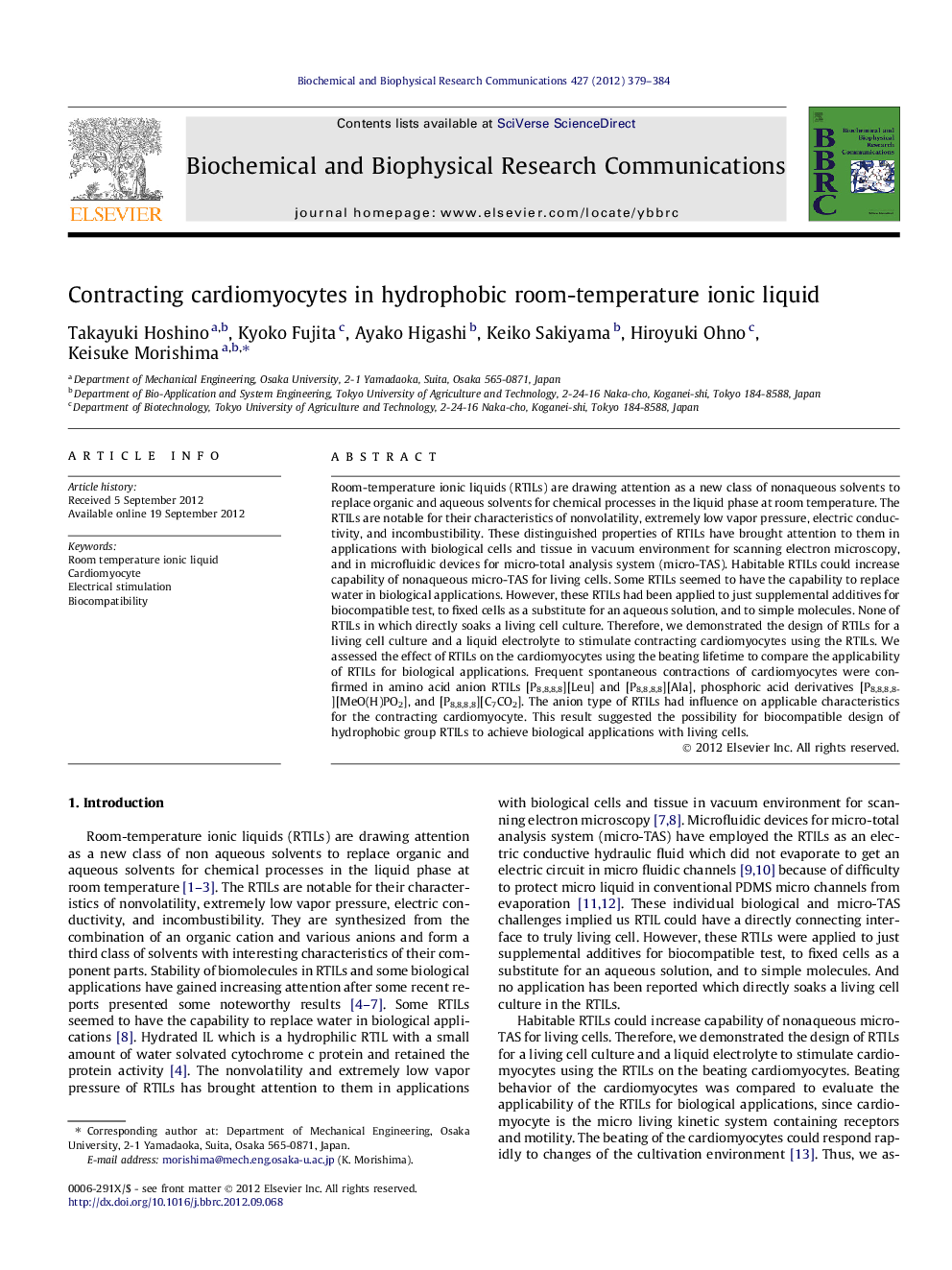| Article ID | Journal | Published Year | Pages | File Type |
|---|---|---|---|---|
| 1929243 | Biochemical and Biophysical Research Communications | 2012 | 6 Pages |
Room-temperature ionic liquids (RTILs) are drawing attention as a new class of nonaqueous solvents to replace organic and aqueous solvents for chemical processes in the liquid phase at room temperature. The RTILs are notable for their characteristics of nonvolatility, extremely low vapor pressure, electric conductivity, and incombustibility. These distinguished properties of RTILs have brought attention to them in applications with biological cells and tissue in vacuum environment for scanning electron microscopy, and in microfluidic devices for micro-total analysis system (micro-TAS). Habitable RTILs could increase capability of nonaqueous micro-TAS for living cells. Some RTILs seemed to have the capability to replace water in biological applications. However, these RTILs had been applied to just supplemental additives for biocompatible test, to fixed cells as a substitute for an aqueous solution, and to simple molecules. None of RTILs in which directly soaks a living cell culture. Therefore, we demonstrated the design of RTILs for a living cell culture and a liquid electrolyte to stimulate contracting cardiomyocytes using the RTILs. We assessed the effect of RTILs on the cardiomyocytes using the beating lifetime to compare the applicability of RTILs for biological applications. Frequent spontaneous contractions of cardiomyocytes were confirmed in amino acid anion RTILs [P8,8,8,8][Leu] and [P8,8,8,8][Ala], phosphoric acid derivatives [P8,8,8,8][MeO(H)PO2], and [P8,8,8,8][C7CO2]. The anion type of RTILs had influence on applicable characteristics for the contracting cardiomyocyte. This result suggested the possibility for biocompatible design of hydrophobic group RTILs to achieve biological applications with living cells.
Graphical abstractFigure optionsDownload full-size imageDownload as PowerPoint slideHighlights► Biocompatible room-temperature ionic liquid was applied on beating cardiomyocyte. ► The lifetime of beating cardiomyocytes was depended on anion functional group. ► A longer lifetime was recorded for no functional group on alkyl chain on their anion. ► Amino group on alkyl chain and fluorine in anion induced fatal condition changes. ► We reported liquid electrolyte interface to stimulate cardiomyocytes.
